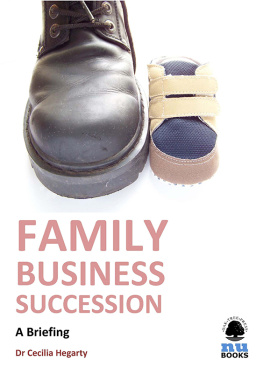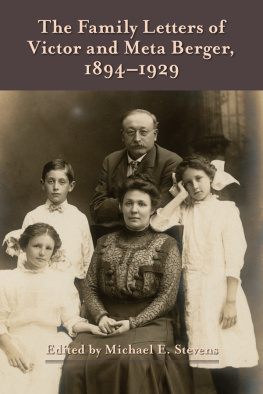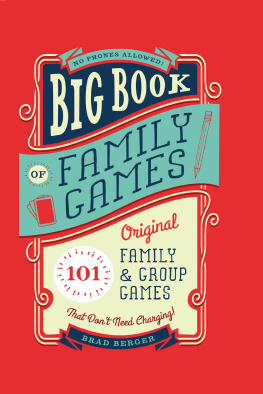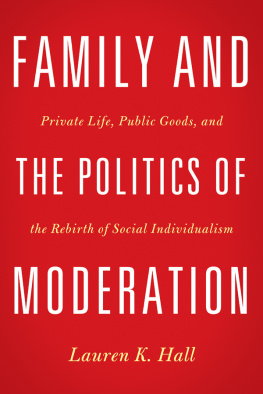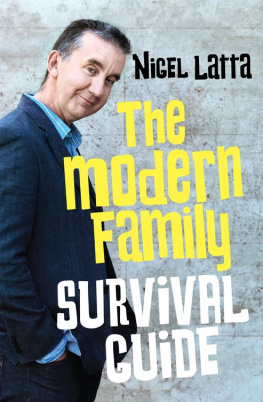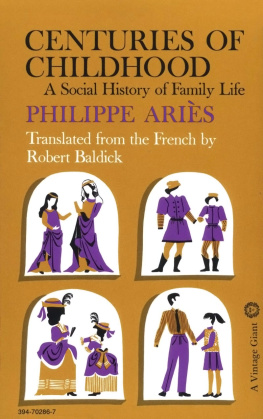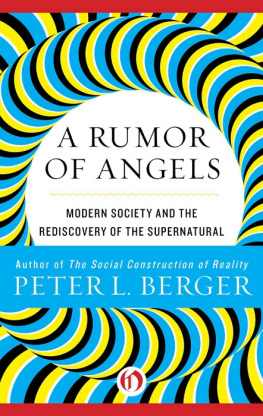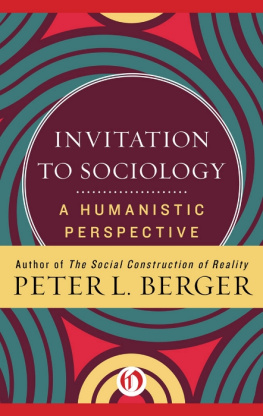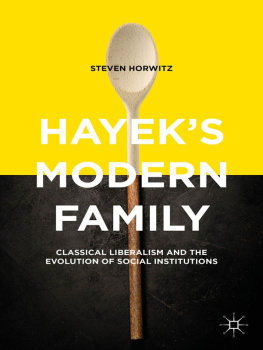The Family in the Modern Age
First published 2002 by Transaction Publishers
Published 2017 by Routledge
2 Park Square, Milton Park, Abingdon, Oxon OX14 4RN
711 Third Avenue, New York, NY 10017, USA
Routledge is an imprint of the Taylor & Francis Group, an informa business
Copyright 2002 by Taylor & Francis.
All rights reserved. No part of this book may be reprinted or reproduced or utilised in any form or by any electronic, mechanical, or other means, now known or hereafter invented, including photocopying and recording, or in any information storage or retrieval system, without permission in writing from the publishers.
Notice:
Product or corporate names may be trademarks or registered trademarks, and are used only for identification and explanation without intent to infringe.
Library of Congress Catalog Number: 2001052508
Library of Congress Cataloging-in-Publication Data
Berger, Brigitte.
The family in the modern age : more than a lifestyle choice / Brigitte
Berger.
p. cm.
Includes bibliographical references and index.
ISBN 0-7658-0121-3 (cloth : alk. paper)
1. Family. 2. PostmodernismSocial aspects. I. Title.
HQ518 .B45 2002
306.85dc21
2001052508
ISBN 13: 978-0-7658-0121-0 (hbk)
Acknowledgements
This book came out of a project of the Institute for the Study of Economic Culture at Boston University supported by a grant from the Lynne and Harry Bradley Foundation. Early work on the project was also supported by the Randolph Foundation through the good offices of Heather MacDonald.
This is a book about the modern family, its nature, its status, and its future. Its main purpose is to identify those structural and ideational factors that have made for its strength and dynamism in the past and to explore the modern familys viability in a world in transition. This endeavor takes the reader on a long journey that begins with a brief portrayal of those social shifts that have caused many to doubt the familys capacity to meet the needs and desires of modern men and women and it concludes with a renewed appreciation of its resilience and importance in the life of individuals and society alike. Fashionable assertions to the contrary, this volume sets out to document that the modern family has shown itself to be an extraordinarily adaptable and vital social institution despite the broad changes that have occurred in the ways we live, work, and conduct ourselves. Beyond that an attempt is made to shed light on the reasons why the vast majority of modern men and women continue to aspire to the ideals and the lifestyle that have distinguished the modern family from the beginning and, in looking to the future, a rationale is presented of why it is reasonable to expect that the family that stood at the cradle of the modern social order some three hundred years ago will continue to provide the basis for any society concerned with the happiness, liberty, equality, and prosperity of all its members. Rather than being condemned to the dust heap of history, as critics of all stripes have been inclined to assume, it is the books sum argument that the modern family is more than a lifestyle choice.
What is at issue today is the viability and future of the conventional nuclear family of a father, a mother, and their children, who live together and who are tied to each other by mutual bonds of love and obligations. Distinctive in structure and ethos, this type of family has long served Western societies as the unifying principle for the organization of individual and social life. In the voluminous literature a number of labels can be found that describe its distinguishing features: social historians and demographers prefer the term
When one looks at the rise and future of the modern world through an analytical lens different from the one we are accustomed to it becomes readily apparent that many aspects of the conventional nuclear family and modern family life have been sorely miscast. One-dimensional and frequently flat, the currently prevalent analytical perspectives have given rise to a view that sees the modern family to be restrictive in form and poorly equipped to deal with the challenges of a postmodern world looming on the horizon. A wealth of new materials derived from disparate fields of inquiry and a reinterpretation of an avalanche of research data available today, however, suggest that this view is in urgent need of redress. In emphasizing the role of social institutions in individual and social life, this volume arrives at a very different assessment of the role of the modern family and its future. While it is taken for granted that political factors and the economy can and do influence the lives of people wherever they may live, the book sets out to demonstrate why the relationship between private life and the macro institutions of society is considerably more complex than it is commonly assumed. In Taken together, these propositions have important theoretical as well as practical implications.
In developing this argument, issue is taken with a plethora of recent studies that have led to claims that a bewildering variety of alternative lifestyles has crowded out the behavioral codes that have long governed the ways in which individuals organize their personal lives. Although masses of statistics undoubtedly indicate that sexuality is no longer normatively prescribed by rules of marriage, and individuals appear to be more inclined to tailor their domestic arrangements to personal needs and desires than in the past, the book attempts to show that these reported behavioral shifts undermine neither the continued viability nor the ideal of the family in its conventional nuclear form. By the same token, the book also reasons that it is safe to assume that exploding rates of cohabitation and divorce do not necessarily imply that marriage is on the way out or that the two-parent family has lost its attraction for the vast majority of ordinary people today. Neither does it give much credence to fashionable arguments that modern individuals are adrift in a whirlwind of change or that they have abandoned their moorings in the conventional family and its equally conventional morality. While it agrees with findings that reflect that individuals in many ways have come to rely to a greater extent on the state and outside professionals, it strongly disagrees with trendy arguments that families today are inclined to relinquish their nurturing and pedagogical mission. If anything, a reinterpretation of the available empirical data indicates that more than at any other period in history families today are to a much greater degree and for a much longer period of time involved with their children and concerned with securing those conditions which they hope will promote their well-being and progress.
Specific public policy proposals advocated by the three political camps dominating the debates in the public arena todaythe liberal, the conservative, and the postmodernistare also challenged. From the perspective developed in the book, all three leave a lot to be desired: the liberal faith in the salutary effect of governmental intervention has a distinctly hollow ring in the face of a record of measured failure; yearnings for the restoration of the traditional family have predisposed conservatives to mythologize the family to a degree that its political agenda frequently bears little relationship to the exigencies of the present; and the entire postmodernist interpretational scheme is based on such flawed assumptions that it is intellectually impossible to take its claims seriously. In a review of major current policy issues, an attempt is made to present a position that is informed by an understanding of contemporary social life in which the family is neither glorified nor castigated, nor condemned to the dust heap of history. In contrast to current practices, the perspective developed in this book permits a sorting out of specific policy recommendations in terms of their potential to undermine the continued viability of the modern family, rather than endorsing the agenda of either politicalcultural camp.


